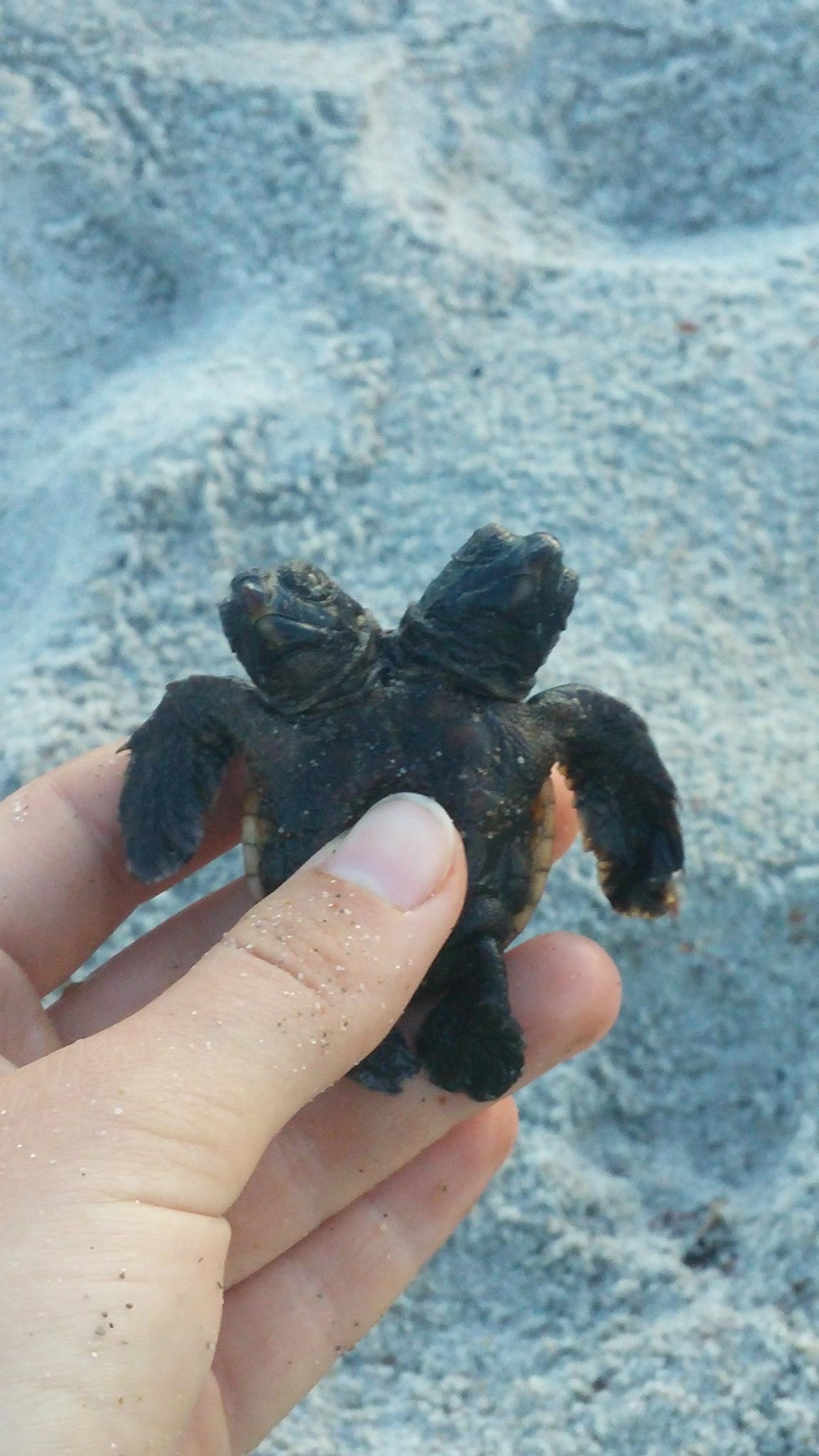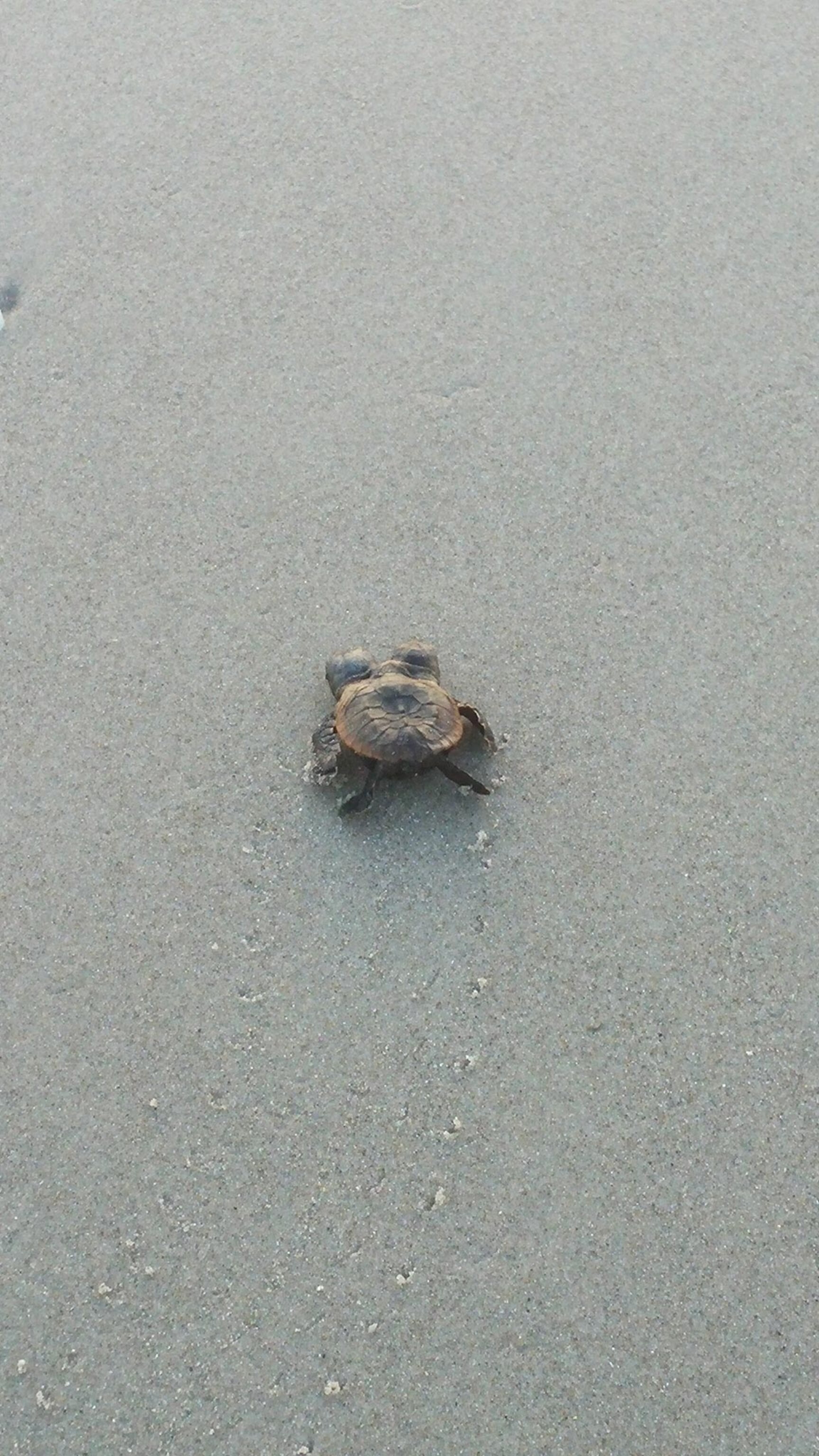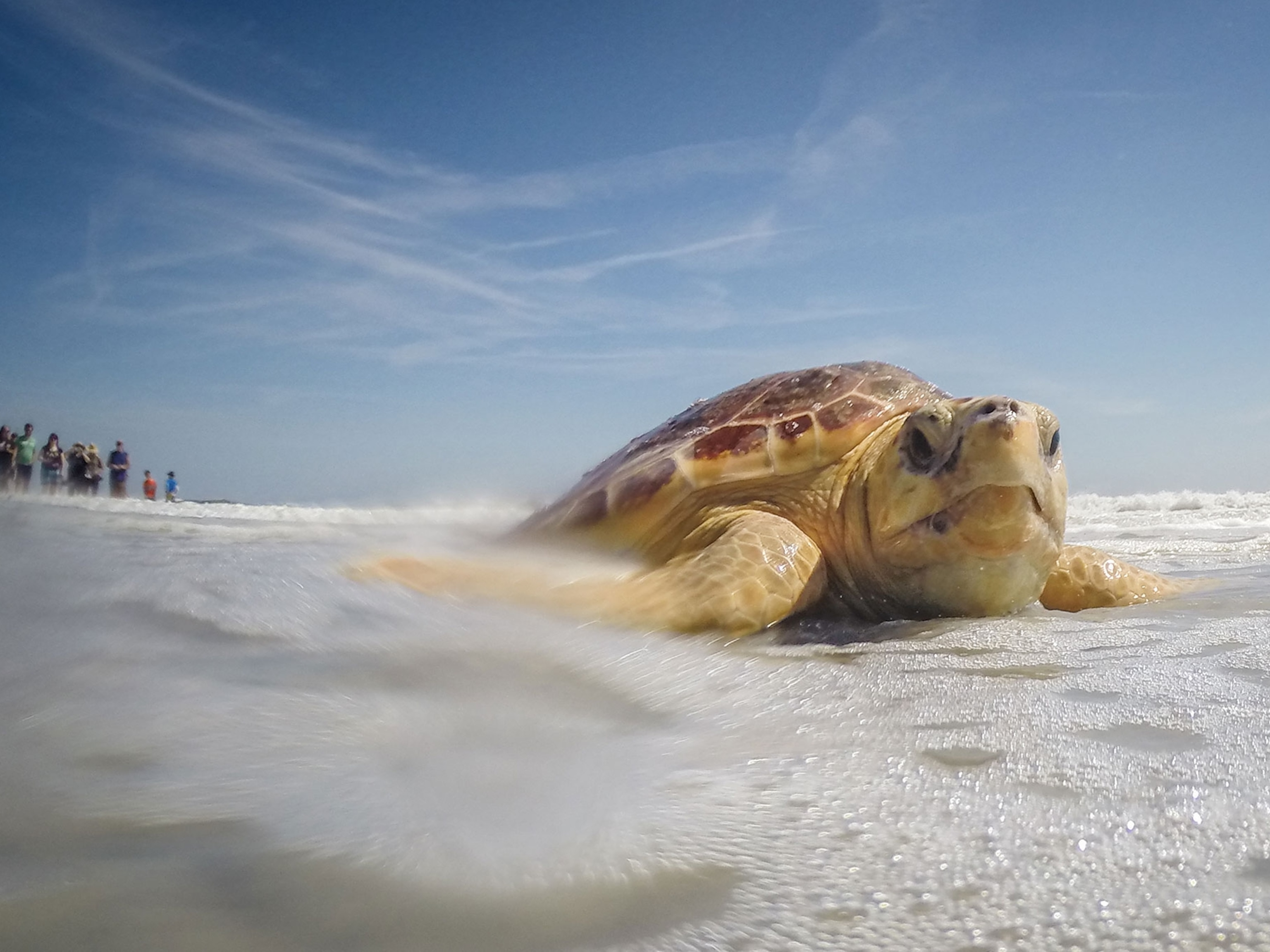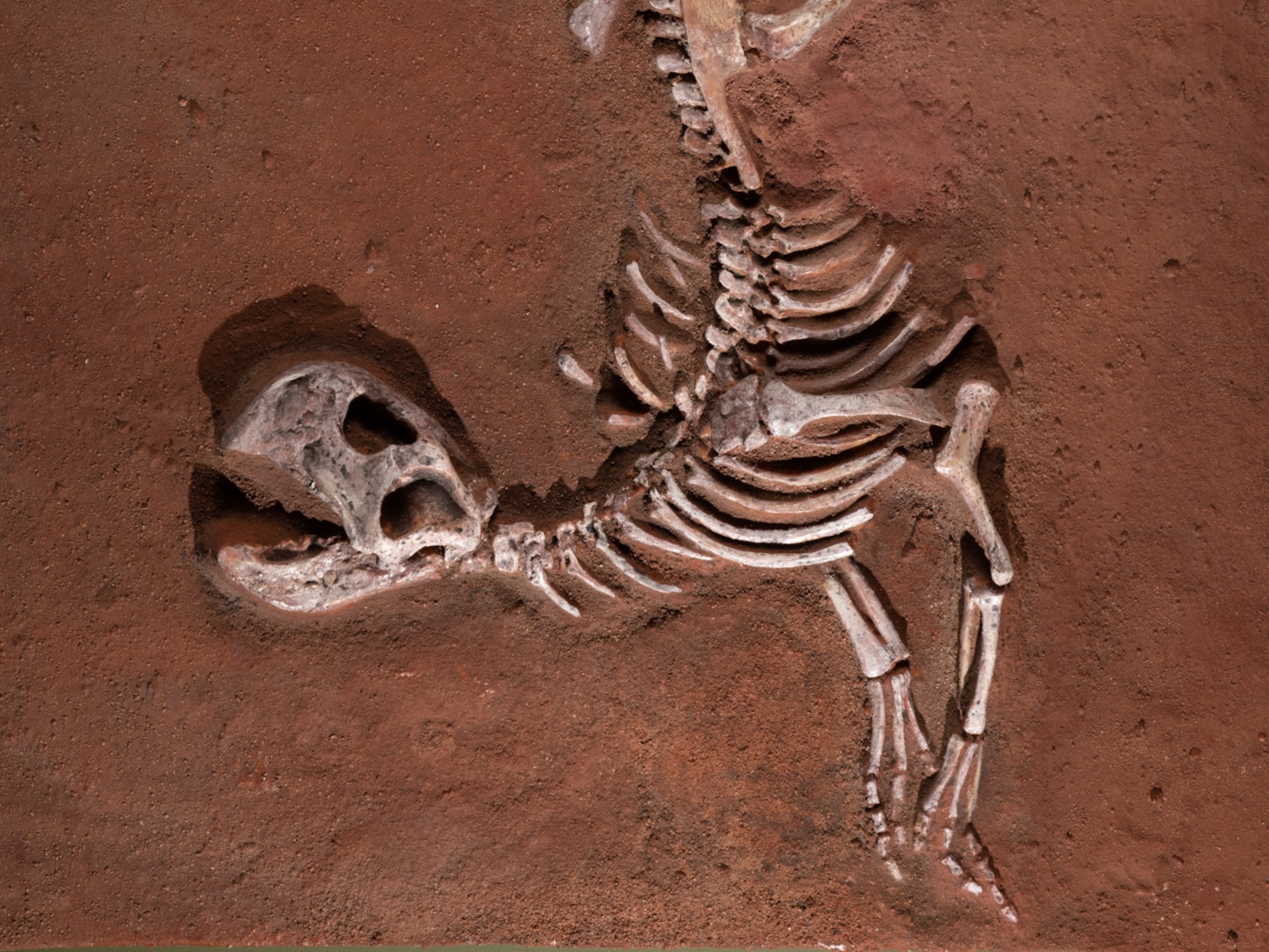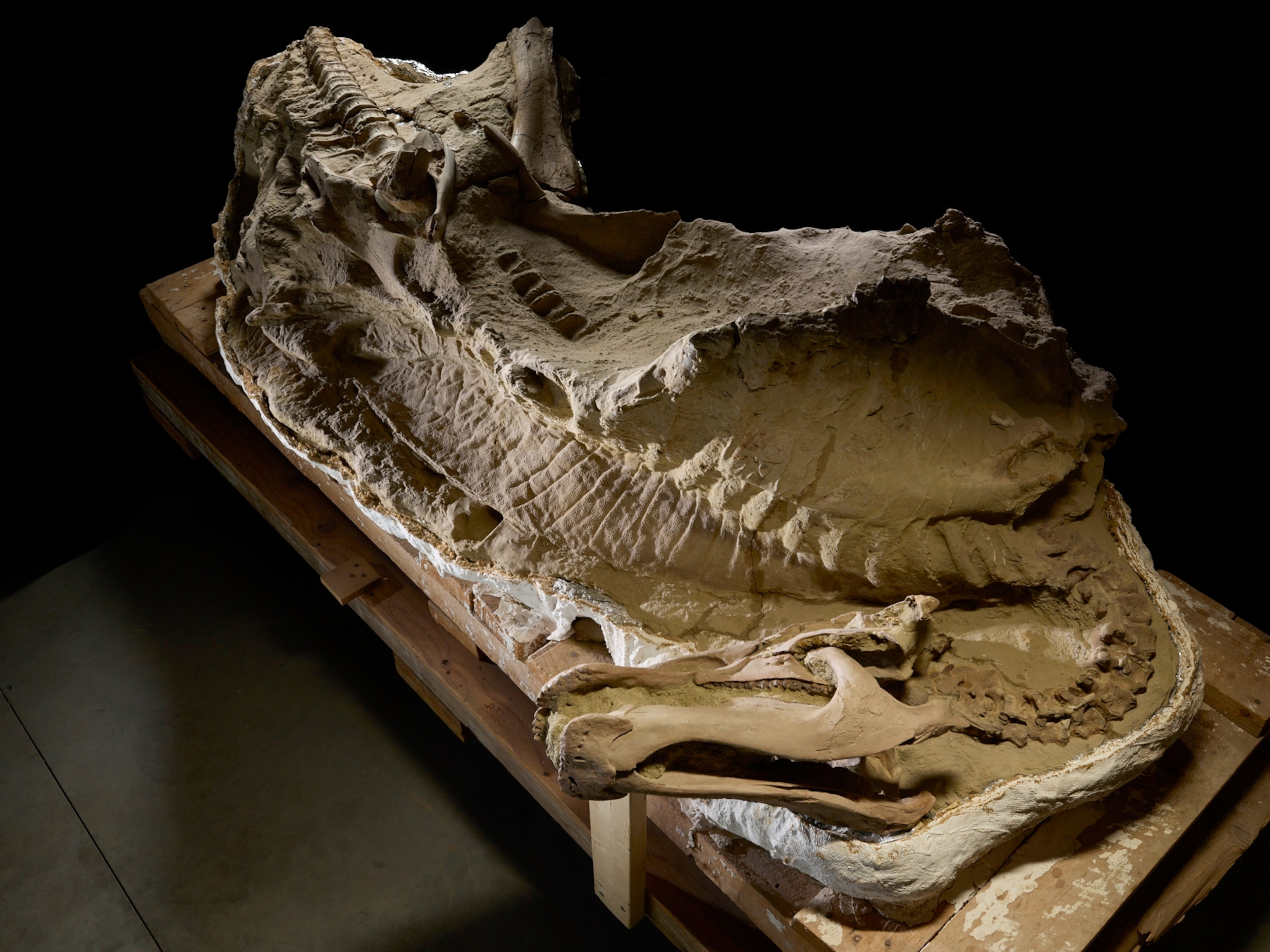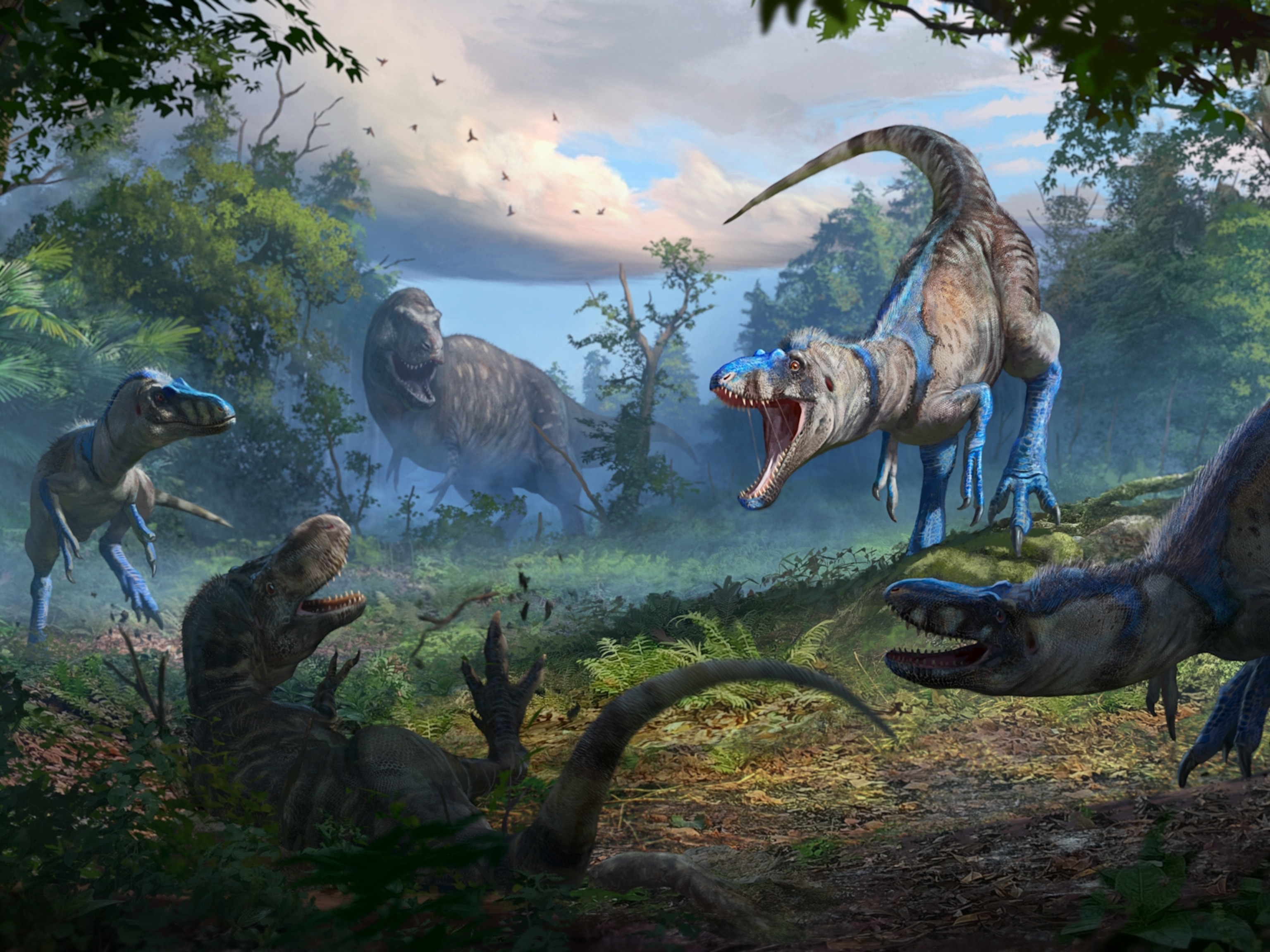Two-Headed Baby Turtle Swims to Sea—Will It Survive?
A turtle with two heads was found in Florida, but whether it will survive the treacherous journey to adulthood remains to be seen.
While checking empty nests left by recently hatched loggerhead turtles, a University of Central Florida intern found a straggler struggling to keep up. Upon closer inspection, she noticed the baby turtle had an extra feature—a second head.
Thousands of turtles lay eggs along the 29-mile stretch monitored by the university, and more still lay their eggs along Florida—one of the largest aggregations of loggerheads in the world. In 2016, just over 122,000 nests were laid along the state's shores.
"It's not rare to find a turtle with developmental abnormalities," says Kate Mansfield, who manages the university's Marine Turtle Research Group.
"In my career I've only seen one other turtle with two heads." (See the world's first two-headed shark and first two-headed porpoise.)
Loggerhead turtles are protected by the U.S. Endangered Species Act, and the International Union for the Conservation of Nature classifies the big reptiles as vulnerable to extinction.
Will It Survive?
The intern released the turtle, and, despite lagging behind its nestmates, the odd-looking hatchling appeared energetic as it crawled away.
"It's possible it could survive, but the chances are pretty low," says Mansfield, who noted a genetic mutation may have caused the two heads, but that a number of possible abnormalities may have been the culprit.
The chances for survival for any hatchling is low: According to the Sea Turtle Conservancy, anywhere from 1 in 1,000 to 1 in 10,000 infant turtles make it adulthood.
Turtles face many dangers along their migration routes. Fishing nets, development along coastlines, and climate change all impact a loggerhead's chances for survival.
When asked if she had ever encountered an adult turtle with a severe abnormality, Mansfield said it wasn't common. Of the wild sea turtles observed by researchers, most are egg-laying females that come to shore. Occasionally her team has found a turtle with a misshapen shell, but the most common issues she sees are injuries, not anatomical abnormalities.
"Injuries from ship strikes or bitten flippers are common," she says.
Better Than One
The Florida turtle isn't the first to gain Internet notoriety. In 2013, a freshwater Texas River Cooter hatched in the San Antonio zoo with two heads. Nicknamed Thelma and Louise, the turtle (or turtles) lived to be a year old before it died of unknown causes.
At the time of its birth, the zoo explained that the turtles suffered from a condition called polycephaly, a condition that results when zygotes don't properly separate during development.
